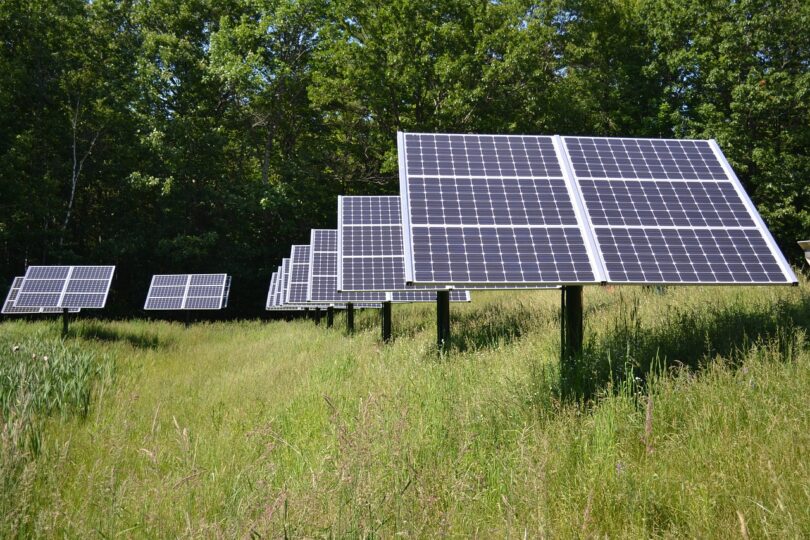Home battery banks are a great way to store energy during peak periods and avoid paying exorbitant rates from the grid. When the power goes out, it can be frustrating, especially if you’re trying to do some chores around the house. That’s where a solar home battery bank comes in handy. A solar battery bank can be a great way to help you power your home during periods of energy outages.
A solar battery bank typically is a collection of batteries that you connect to your home’s electrical system in order to provide backup power during power outages. Connecting your battery bank to the home electrical grid will require an outdoor conductor and meter, as well as indoor connections for your batteries. The costs of installing a battery bank vary depending on the size and type of system, but typically they are less expensive than purchasing electricity from the grid. In this article, we will explore the different types of home battery banks and how they work. We will also discuss some things to keep in mind when selecting a home battery bank, such as size, capacity, and price.
What is a home battery bank?
A home battery bank is a power storage device that uses lead acid, nickel-cadmium, lithium ion, or polymer batteries to provide emergency backup power in the event of an outage. A home battery bank is a system that uses batteries to store energy generated from renewable or off-the-grid sources such as solar panels. This stored energy can be used to power devices in the home or provide backup power in case of an emergency.
The most common type of home battery bank is a solar panel battery bank. This type of battery bank normally consists of at least six solar panels and one or more batteries. The batteries are used to store energy generated by the solar panels so that it can be used when needed.
Another common type of home battery bank is a wind turbine battery bank. This type of battery bank normally consists of at least six wind turbines and one or more batteries. The batteries are used to store energy generated by the wind turbines so that it can be used when needed.
Types of Home Battery Banks
There are several different types of home battery banks, each with its own set of pros and cons. Here’s a look at the most common types:
- Lead-acid batteries: These are the oldest type of battery, and they’re often the cheapest option. They last for around six years before needing to be replaced, but they’re heavy and require regular maintenance.
- Nickel-cadmium batteries: These batteries are lighter than lead-acid batteries, but they may not last as long – typically around three years. They also need to be regularly charged, and their cells can become damaged if not handled properly.
- AGM (Absorbed Glass Mat) batteries: These batteries are technically not considered “home” batteries because they require an external power source to work. However, they’re popular in solar energy systems because they don’t corrode and can hold a lot of charge.
What are the benefits of a home battery bank?
A home battery bank is a great way to store energy during periods of low demand, like when the sun is not shining or the wind isn’t blowing. A home battery bank can also be used to power appliances like a refrigerator or air conditioner during power outages. Home battery banks can also provide backup power in case of an emergency.
There are many benefits to having a home battery bank, and it’s worth considering if you’re looking to increase your energy independence or reduce your reliance on utilities. Here are five reasons why you should invest in a home battery bank:
- Energy Independence: A home battery bank can help you become more self-sufficient in terms of energy. By storing energy from renewable sources like solar and wind, you can ensure that you have enough power when there is an outage.
- Reduced Energy Bills: Having a home battery bank can help you reduce your monthly energy bills by storing the dirty electricity generated by your appliances during times of low demand. This can free up space on your utility bill for other things, like lower rates or more reliable service.
- Emergency Backup Power: If there is an emergency and your utility goes out, having a battery bank at your disposal will give you back some level of peace of mind. A battery bank will allow you to run essential appliances like lights and refrigerators without relying on grid power.
- Reduced Carbon Footprint: Buying a home battery bank can help you reduce your carbon footprint. By storing energy from renewable sources, you’re reducing the amount of CO2 that is released into the atmosphere.
- Improved Home Security: Having a home battery bank can increase your home security by giving you some level of autonomy in case of an emergency. If there is an outage, having a battery bank can allow you to run appliances like a refrigerator or air conditioner without relying on utility power.
How to install a home battery bank
Installing a home battery bank is an easy way to boost your electricity usage and ensure that you have enough power when the grid goes down. There are a few different types of batteries to choose from, so you can select the one that best suits your needs.
To install a battery bank, start by measuring the space where you will be placing it and subtracting ac outlet cover plates and wiring access points. You also need to account for any extra room needed to install the battery bank in order to avoid overcrowding or obstructions. Once you have measured and calculated your space, begin by removing any furniture or other objects that may get in the way.
Next, unpack your new battery bank and remove all packaging material. Make sure that all wires are properly secured before beginning installation. Begin by assembling the battery bank on its side so that all cables are accessible. Next, connect each cable to its corresponding terminal block on the back of the unit. Once all cables are connected, flip the unit over so that it is ready for use.
If you plan on using the battery bank during an outage, make sure that you have a copy of your electric bill handy so that you can confirm which circuit your battery bank is drawing power from during an outage. If everything goes according to plan, your home should now be fully powered by your new battery bank!
Pros of a Home Battery Bank
Home battery banks are a great way to store energy for when you need it and have the added security of being able to draw power from the bank if your power goes out. Here are the pros of using a home battery bank:
-Battery banks can be used to store energy for when you need it – this is great for times when you can’t access an outlet or your solar panel is not working.
-Banks can be used in place of traditional power sources such as generators or solar panels in cases of an emergency.
-Many battery banks come with outlets so you can use them to power devices like lights or appliances while they are being stored.
-Banks usually have a longer lifespan than traditional power sources, meaning that you will not need to replace them as often.
How do you choose the right home battery bank for your needs?
When choosing a home battery bank, there are a few factors to consider. The type of battery bank you need will depend on your specific needs and preferences. Below are some general guidelines to help you choose the right battery bank for your needs:
– Size and weight: Some people prefer smaller, lightweight battery banks while others may want larger, more robust models. It’s important to consider both how much power you need and how bulky the bank is going to be.
– Battery capacity: How much electricity can the battery bank store? This will determine how often you’ll need to recharge it. For example, a model that can store 10,000 charges might be necessary if you use your home appliances frequently but would not be enough for someone who only uses their lights occasionally.
– Connectivity: Some battery banks come with built-in solar panels or wind turbines that allow them to be operated off of renewable energy sources such as solar or wind power. Others have ports that allow them to connect directly to devices in order to provide power when needed.
– Price: Another factor to consider is price. Some high-capacity batteries can cost more than other models, but they may offer greater storage capacity or additional features such as connectivity or renewable energy support.
Here are five tips on how to choose the right home battery bank:
- Size is key. Make sure to choose a battery bank that will fit your needs. You don’t want to buy a battery bank that’s too small or too big – you’ll just end up wasting money.
- Look for banks with multiple batteries. Not only will this save you money in the long run, but it also ensures that you have enough power when you need it most.
- Consider the charging mechanism. There are two main types of charging mechanisms available on home battery banks: plug-in and USB-C (or Thunderbolt 3) ports. Plug-in charging is more common, but USB-C (or Thunderbolt 3) ports offer faster charge times and can be more easily connected to other devices.
- Think about your needs overall. When deciding which battery bank is best for you, think about what kind of power backup you need – whether that’s temporary or indefinite – and what type of device compatibility you need in order to use it effectively.
- Do your research! Reading customer reviews can help you make an informed decision about which home battery
Conclusion
A home battery bank can be a great way to ensure that you have access to electricity when and where you need it, whether that’s in an emergency or for long-term use. With the ever-growing popularity of solar panels, many homeowners are starting to think about ways to harness their power and utilize battery banks energy at home. A solar battery bank is a great way to store energy from your solar panels for when you need it.
You can use it to power devices in your home, or sell the excess energy back to the grid. Solar battery banks are also a good way to help offset your electricity costs. A battery bank from Univix can be a great way to augment your solar energy resources and provide reliable backup power in case of an outage. We hope that our above tips will help you get started on building your very own battery bank!








Leave a Comment
You must be logged in to post a comment.